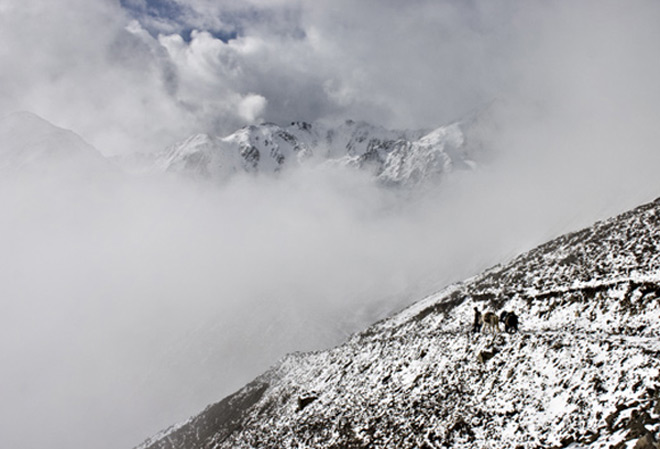
Location: Tsemi Pass ????? to Minya Konka Monastery, Sichuan, China (29�31'7.04"N 101�43'13.60"E)
Date: 25 October 2006, 9.40pm
Camera: Canon 300D with kit lens
If you are an avid trekker or outdoor person, China has many exciting treks to offer. Many of the more popular and high-attitude treks are in provinces such as Yunnan, Sichuan, Xinjiang and Tibet. As with most other Chinese destinations, once they are �discovered� by the Chinese populations, these destinations invariably become more �commercialised� with makeshift accommodation and food stalls set up- even in very harsh and remote locations. These places also tend to get swamped by Chinese tourists (in the case of treks, more adventurous trekkers from the cities, who come �dressed to kill� with spanky new outdoor outfits that they do not know their functionalities or even ho to use). It is not a bad thing to have commerce activities in such places- convenience such as not needing to bring tents or food supplies- as long as they respect the environment, which sadly is not the norm. Hence one will find heaps of rubbish, human waste and structures being erected indiscriminately. One of the short multi-days interesting treks to do in Sichuan is the trek to Minya Konka Monastery (part of the route to the summit of Minya Konka, the highest peak in Sichuan). One can read about the trekking route and attractions in these articles. One of the highlight of the trek is to see the Minya range from the high pass of Tsemi Pass ????? at 4,440m. However one have to be real lucky to do so as the pass is well-known for poor visibility due to fog, as can be seen in the photo.